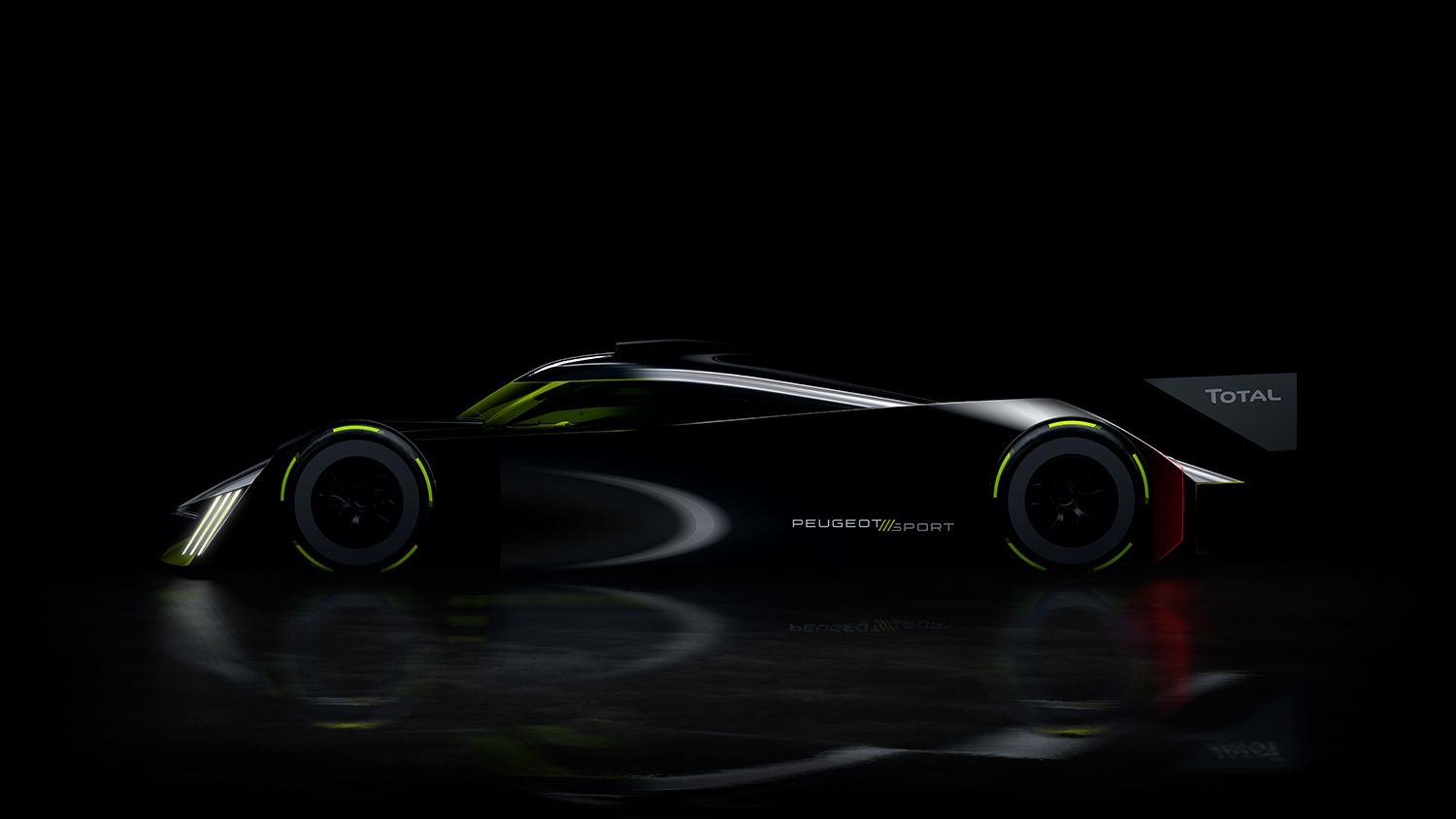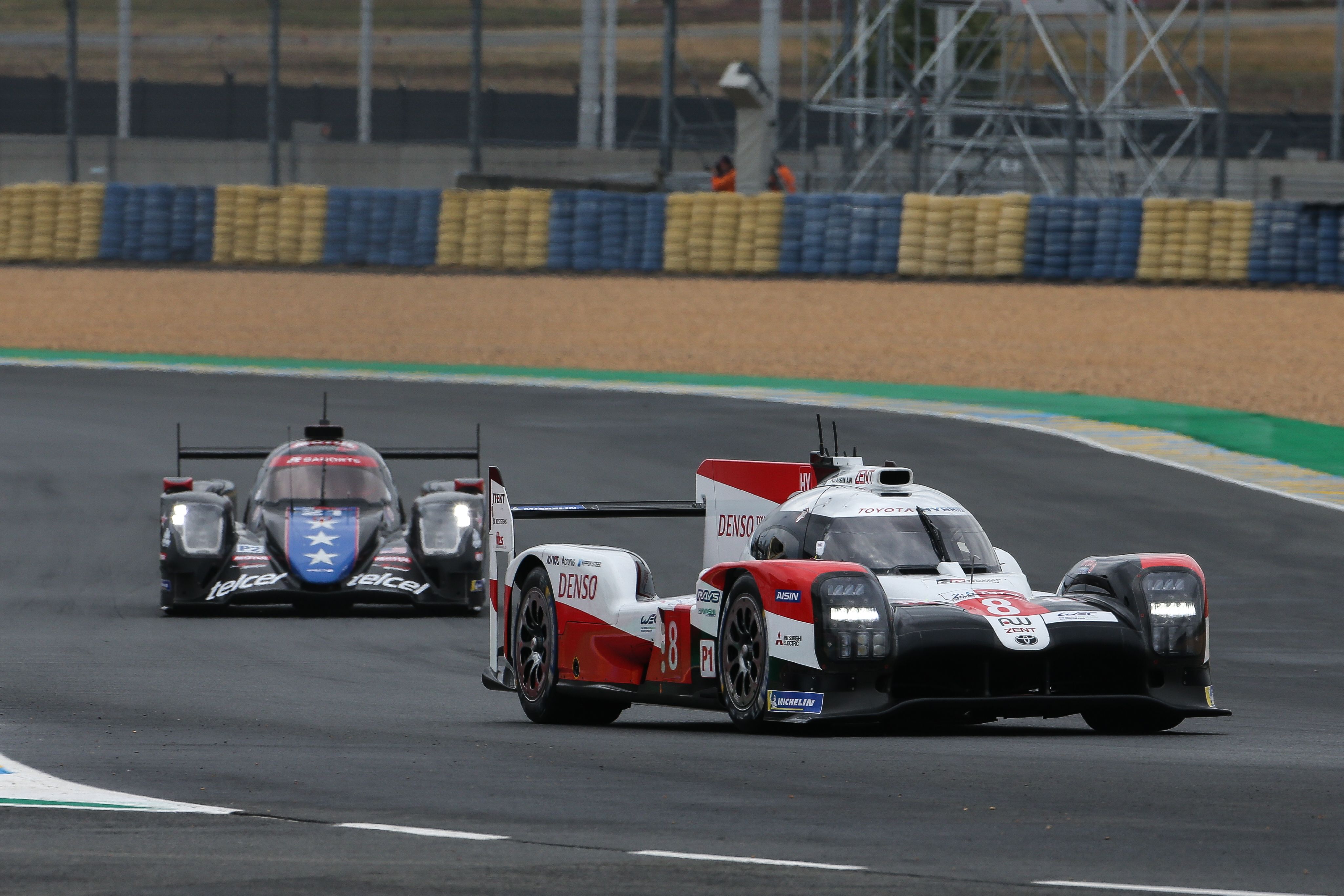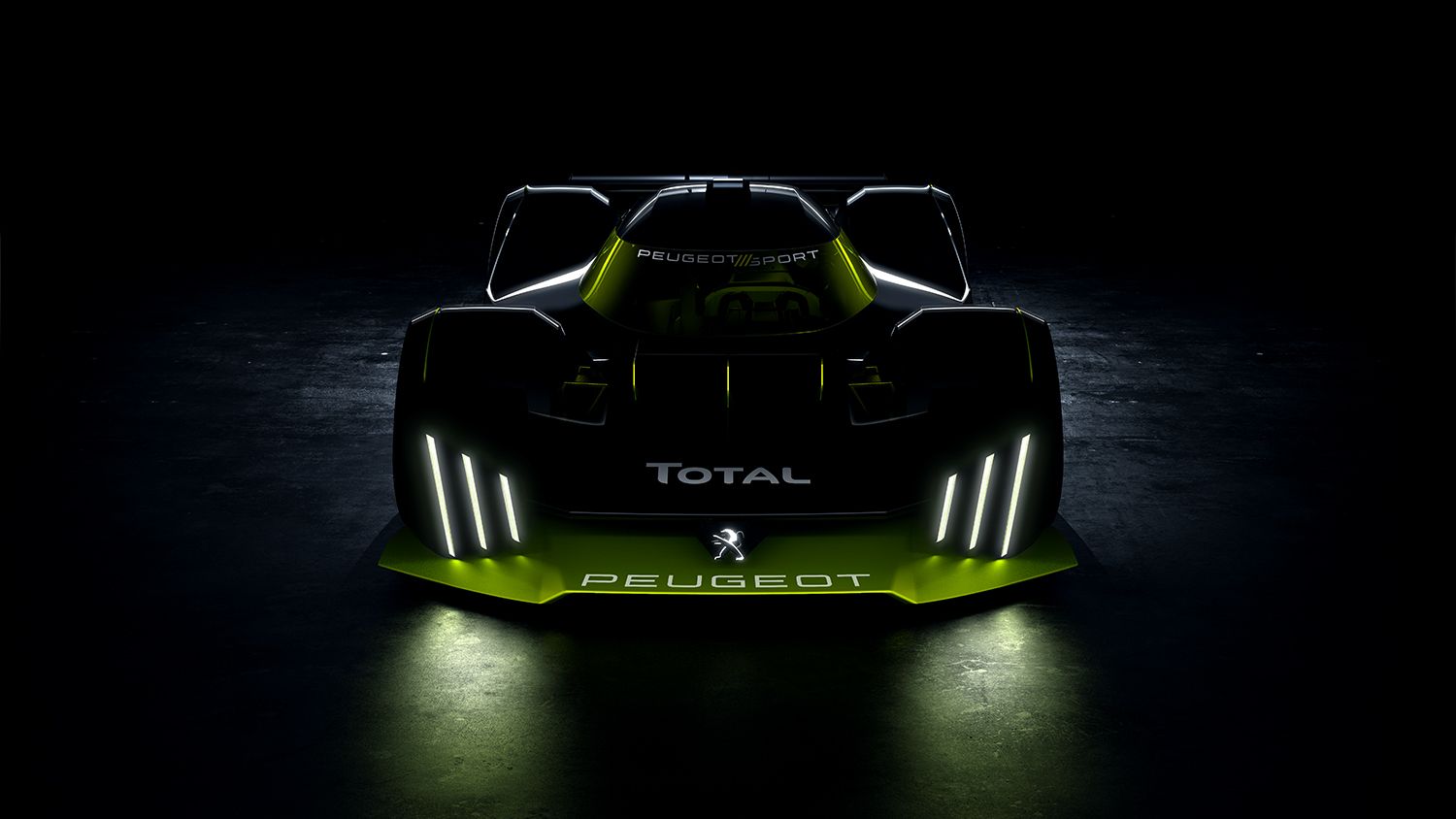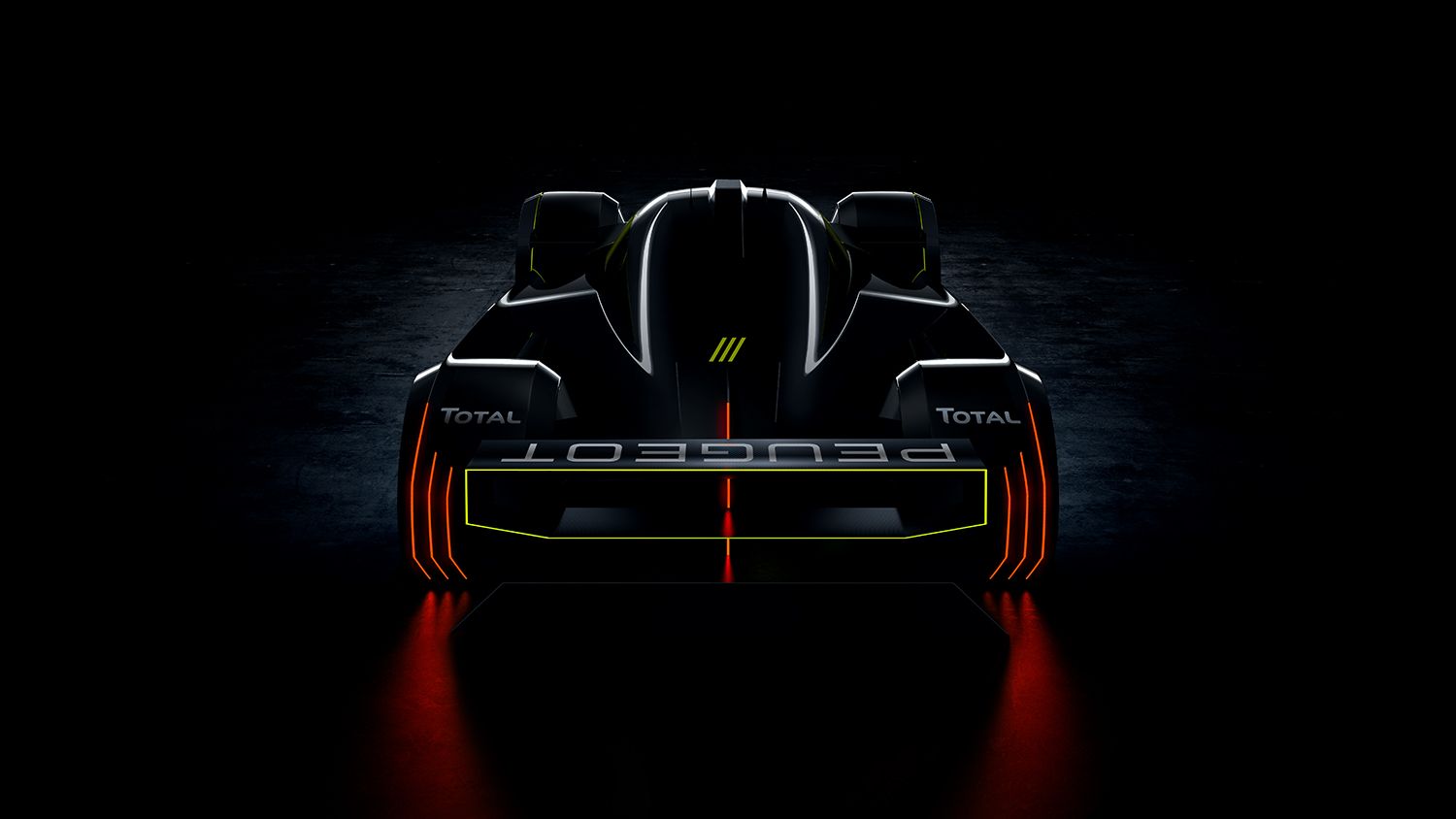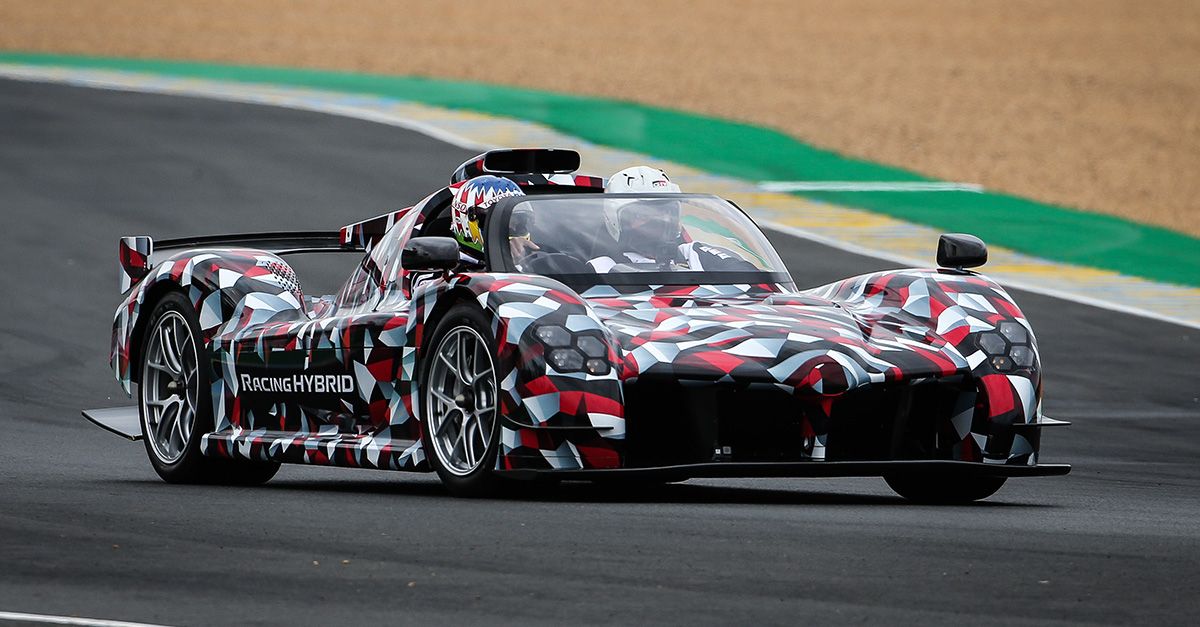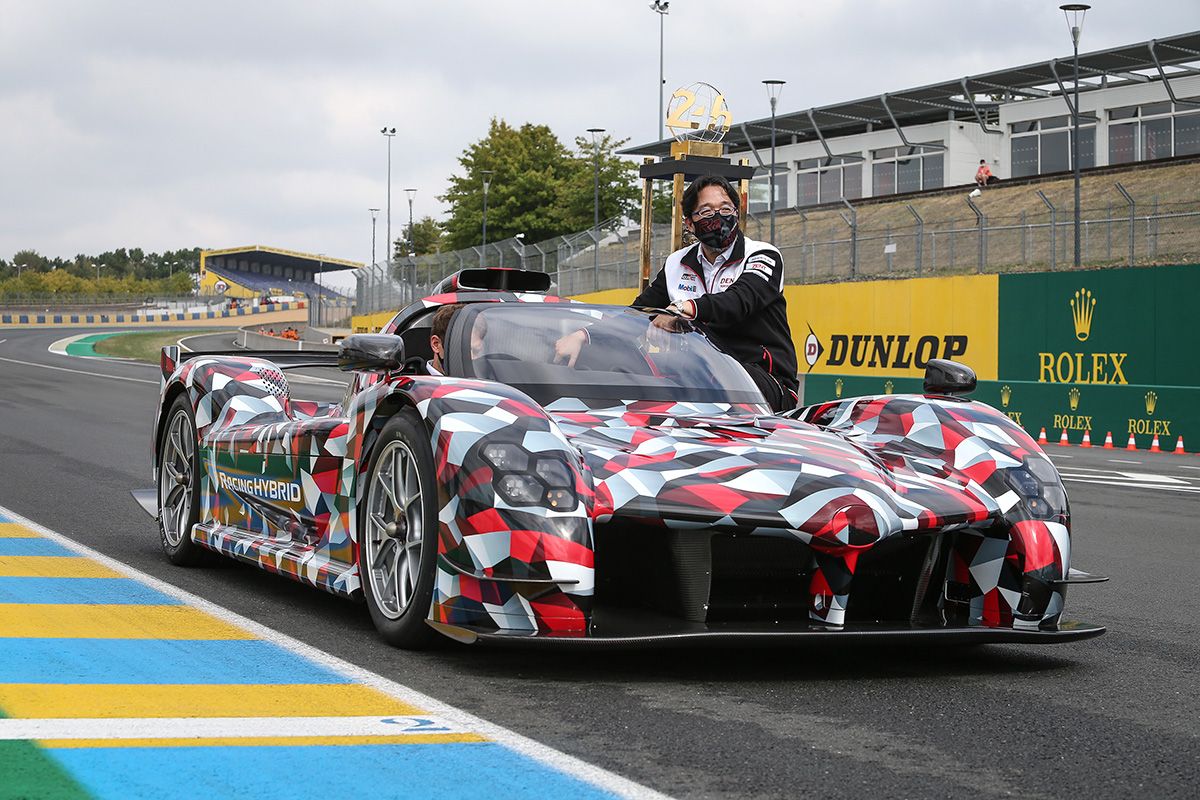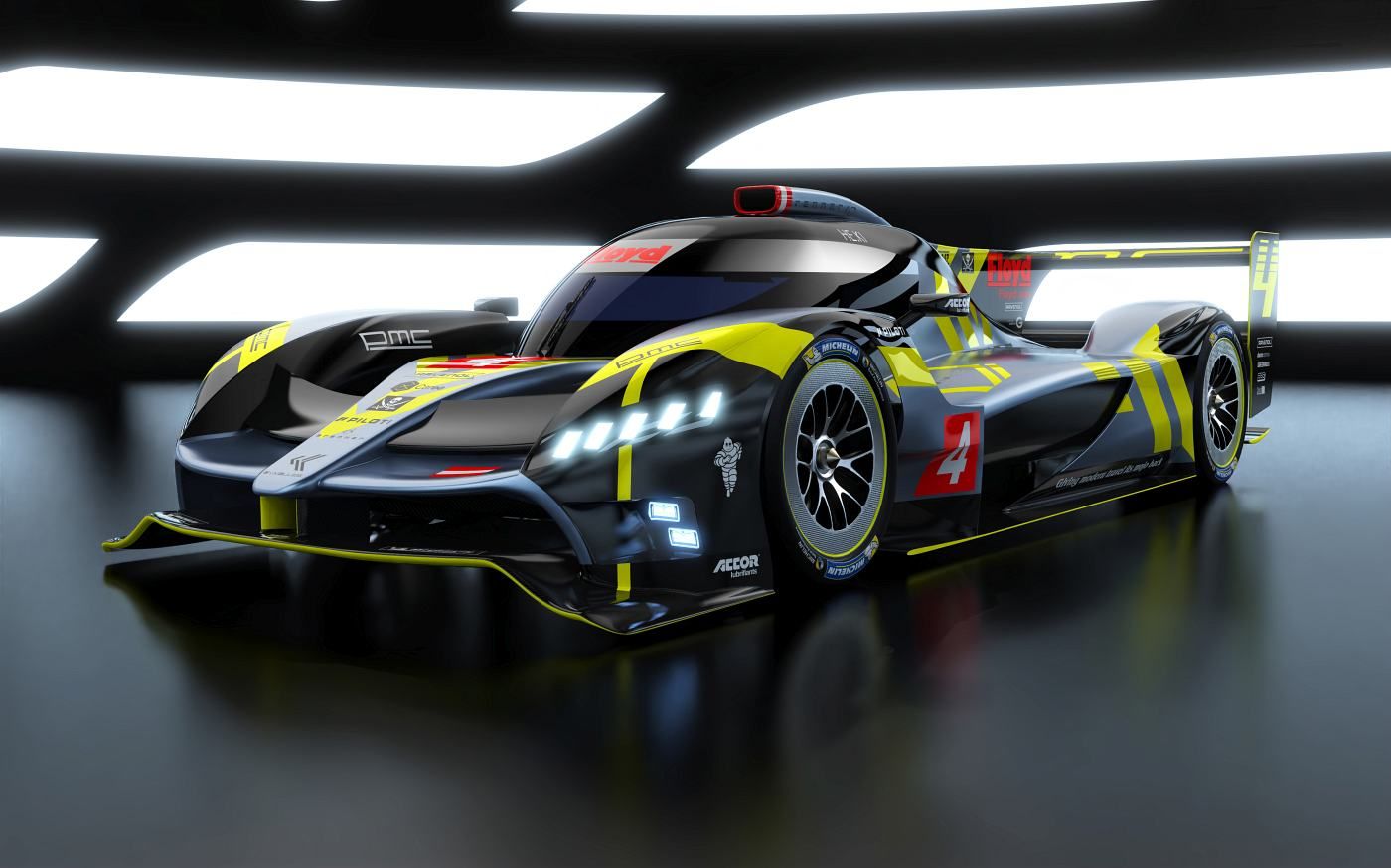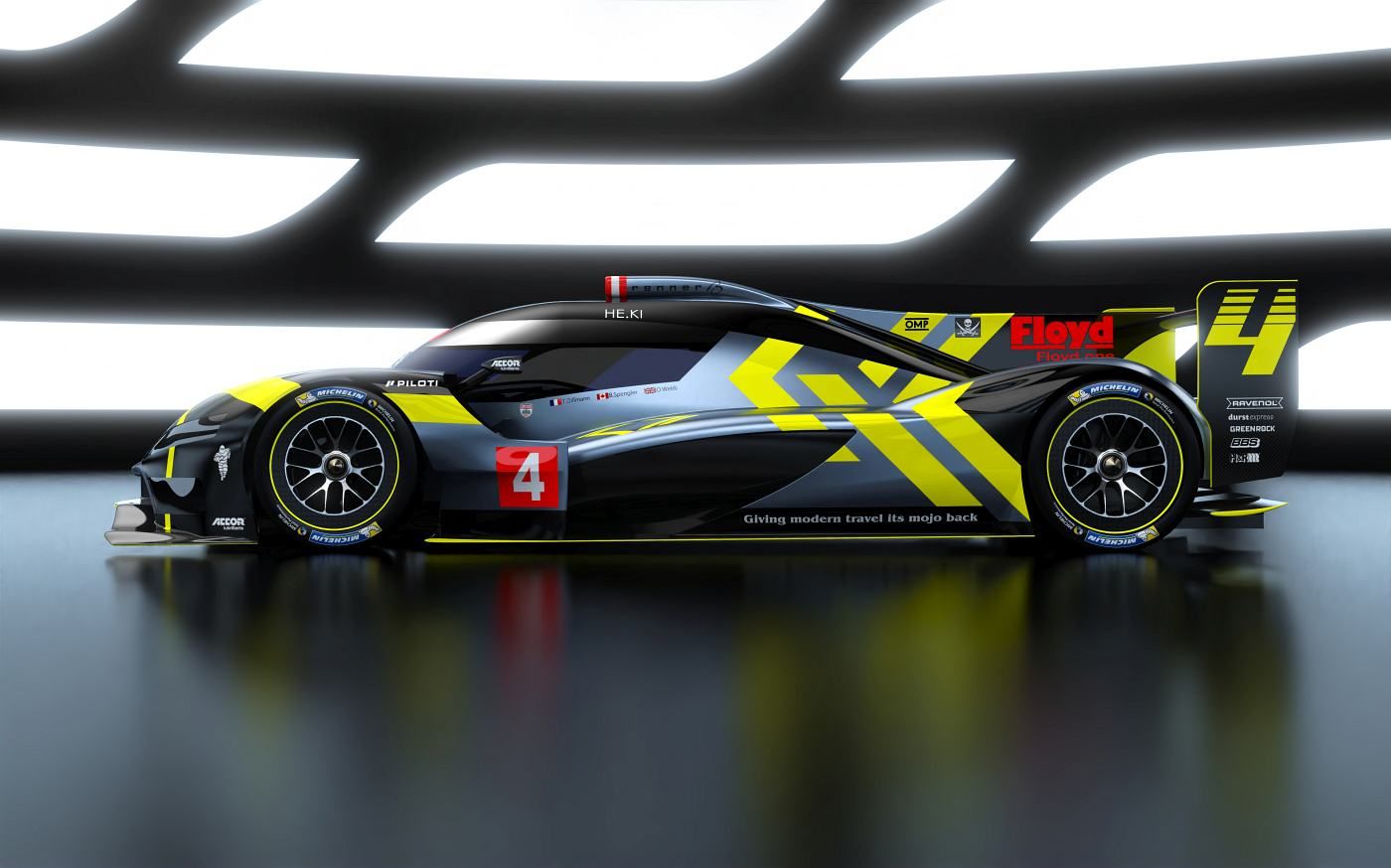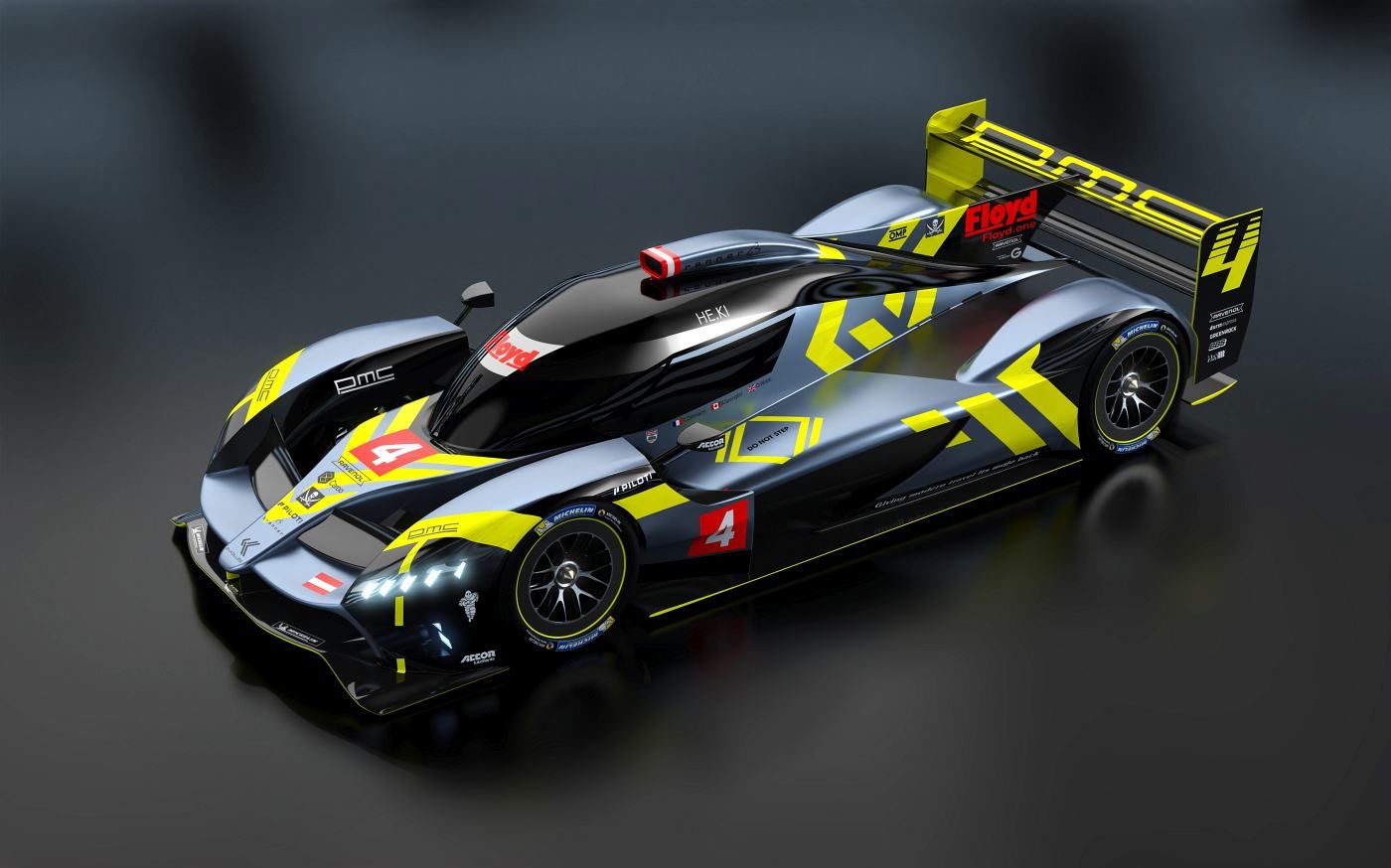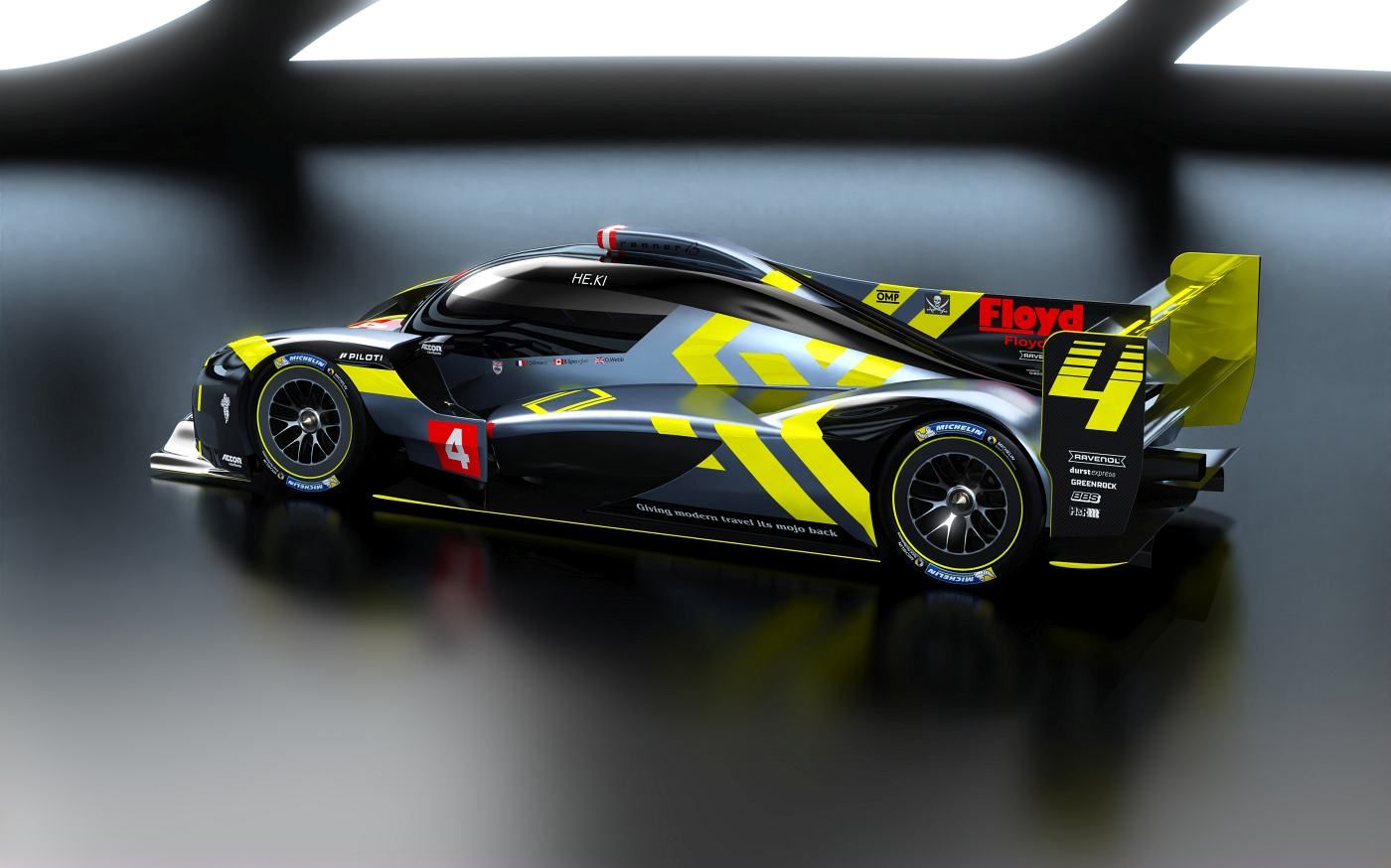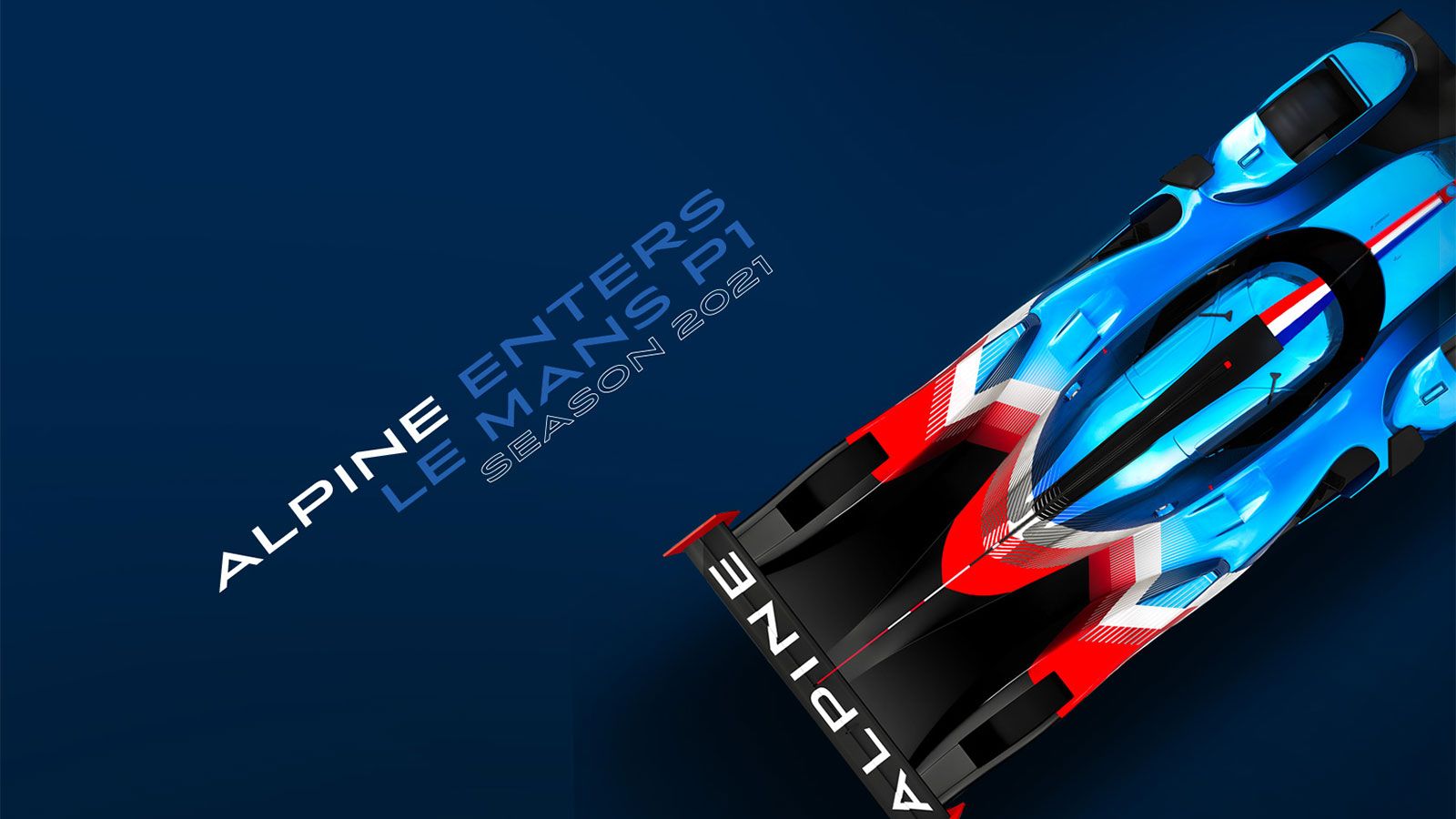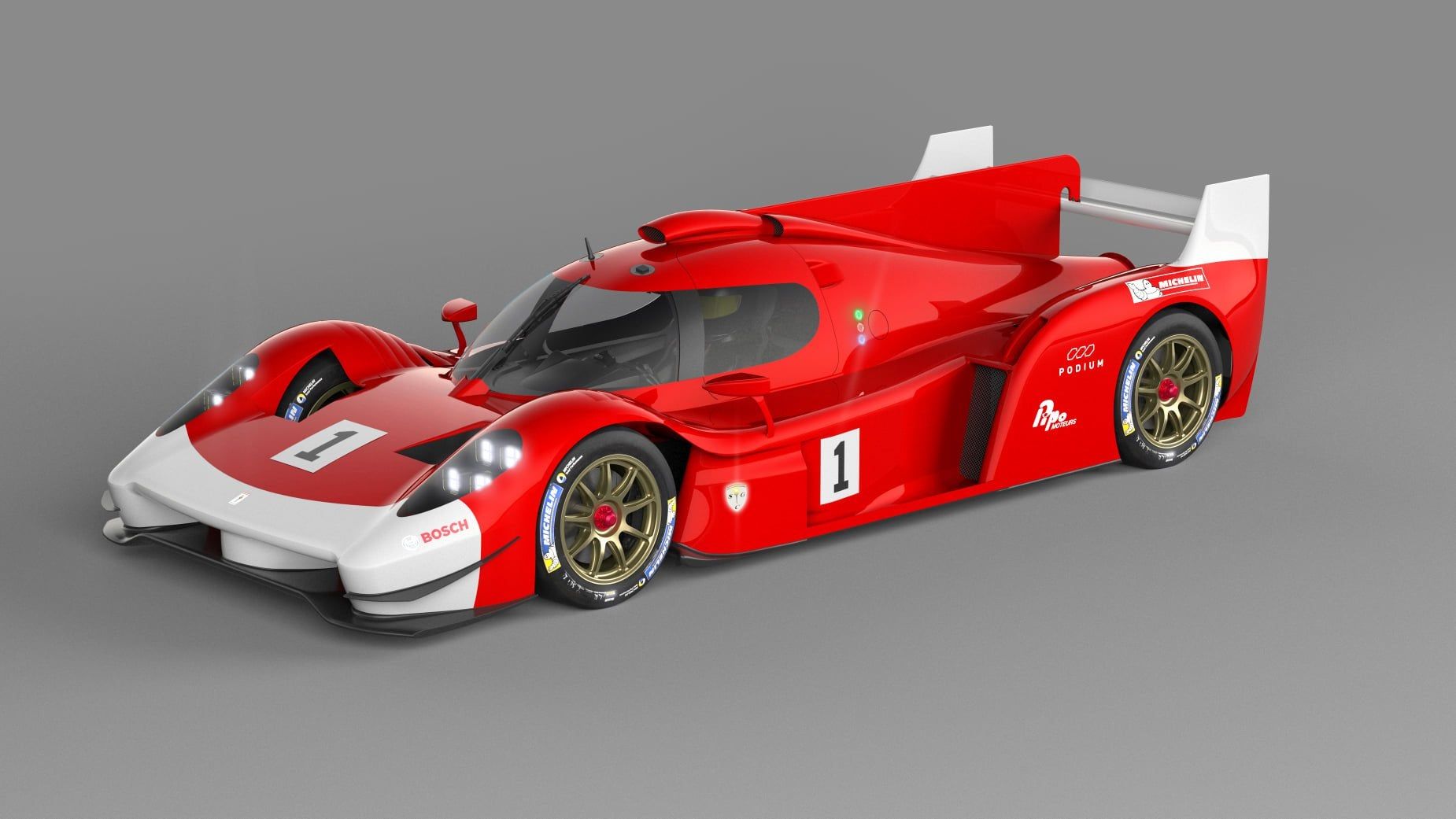The 88th running of the mythical 24 Hours of Le Mans, the world's most famous endurance race, may not have been the most exciting of the lot. The much-anticipated rain failed to make an appearance and the classes we expected to put on a show for us hardly did.
So, while the race itself can be considered a letdown, the news that dropped on the build-up to Saturday's and Sunday's showdown have been particularly interesting. We now know more about Peugeot's LM Hypercar program, as well as ByKolles', and more details have emerged about the upcoming LM Daytona Hybrid ruleset. Read on to also find out whether or not a hydrogen-fueled future is still on the cards at Le Mans and also to find out more about Toyota's upcoming halo hypercar.
The World Endurance Championship Is On The Verge Of Change
It's been eight years. Eight years since the hybrid LMP1 prototypes have roared onto the scene, first the sleek, white-and-grey Audi R18 E-Tron Quattro and then Toyota's first purpose-built endurance sports car in 14 years, the TS030 Hybrid. As these two lived out their lives, Porsche joined in on the fun in 2014 followed by Nissan the following year. While the Japanese manufacturer's dramatic front-engined concept failed to make an impression in the competition and bowed out unceremoniously, the trio of Audi, Porsche, and Toyota would battle it out for top honors in what's been hailed as a 'golden era' of sports car racing.
But then the Dieselgate scandal hit and the VAG Group's budget shrunk overnight, a situation emphasized by the speed at which the suits back in Germany sentenced various racing programs to instant death.
That's when the FIA's World Endurance Championship entered a state of limbo. Not knowing how to keep Toyota, the only manufacturer left in the game, in good spirits, the organizers promised that the prototype from Japan would maintain its advantage no matter what for as not to nullify the significance of its hybrid technology. That advantage ended up being written in the rules and the new teams and constructors that came in hoping to fight Toyota on a level playing field were effectively lied to. They knew Toyota had to have some sort of upper hand but were talked into believing that the Equivalence of Technology (EoT) would actually work at least somewhat even things out.
Soon enough, however, after a 2018 edition of the 24 Hours of Le Mans with a 10-strong LMP1 field, people started realizing that Toyota's new-found dominance was going to become the norm and that's when the last few nails in the LMP1 category's coffin slid into place. The teams - SMP Racing, Dragonspeed, or Ginetta - all backed out and the two that remained - ByKolles and Rebellion - weren't sure if that was the right decision. Pressured by a dying top class, the ACO was pressed into action and came up with the LM Hypercar class in 2021.
There weren't many takers at first with only Toyota, Aston Martin, Glickenhaus, and ByKolles announcing their intention to build a car for the new ruleset and the whole thing grew in complexity even more when IMSA announced more details about its so-called DPI 2.0 formula that would replace the current top-level machinery in the Weathertech Sportscar Championship. Ultimately, pushed by Aston Martin's decision to postpone its program, the ACO had to work with IMSA and the two parties agreed to follow the same route. Thus, the DPI 2.0 class, rebranded as LM Daytona Hybrid (LMDH), would be allowed to race head-to-head with LM Hypercars in a new top class that would be one and the same in both IMSA and the FIA WEC.
The LMDH cars would still be underpinned by one of the four LMP2 chassis, albeit with even more modifications and a spec hybrid system, while the LM Hypercars stuck to the original plan: a bespoke chassis, bespoke hybrid system, and a production version (at least 20 units) of the race car to justify the 'hypercar' moniker.
It didn't make much sense at first as the bosses of both series tried to make us believe there actually is a market for both categories: the cheaper LMDH and the few-times-more expensive LM Hypercar. While we still have to wait a couple more years to see how it all pans out, many news emerged during the days leading up to the 88th running of the 24 Hours of Le Mans, and here's a rundown of the most important headlines to bring you up to date with where everyone's at; the organizers, the teams, the manufacturers, and the rules.
Peugeot Commits to LM Hypercar
We went back in time to 2012 at the beginning of today's piece as that's when Audi's hybrid LMP1 prototype was joined on the grid by Toyota thus kick-starting the modern era of hybridized, future-focused prototype race cars.
Since then, Peugeot's return has been tipped as a possibility more than once but the 'Lion' kept shrugging off any such claims. Until now. Well, not now, the program was actually announced in December of 2019 but only last week did we find out more about what Peugeot will actually race. We've known for a while that the French team has considered both paths, LM Hypercar and LMDH, and we didn't know what would be the chosen one. Well, now we know and it is LM Hypercar.
With this announcement from Peugeot's CEO, Jean Philippe Imparato, came the first few details: Peugeot has inked a partnership with Total for this project and the end result is a 670 horsepower, all-wheel-driven prototype whose silhouette has been teased by a few artworks released by Peugeot to whet our appetite. It won't be until 2022 that these drawings will turn into a race car. To mark its comeback, Peugeot took out from its extensive stash one of its gorgeous 908 HDI FAPs that went on a parade lap around Circuit de la Sarthe.
is Imparato said to Sportscar365. "In terms of values for Peugeot, I had a hard time imagining any other decision than the more demanding one, in terms of the technical challenge," Imparato added referring to Peugeot's long-standing relationship with motorsports, be it through its exploits in endurance racing or, indeed, rallying.
Imperato also pointed out that the LM Hypercar will be a tangible link between the track and the road, not only because it will share cues with current Peugeot products but also because of the tech transfer that invariably happens further down the road. "Motorsport is a tool and there’s perfect convergence between these regulations and our strategy at the moment," he said.
Also important for Peugeot was the 'freedom' that the LM Hypercar class offers you as an OEM, according to Peugeot Sport WEC Technical Director Olivier Jansonnie who praised the ability to introduce many production-derived styling cues when developing the body. "Having studied , we decided to go in LMH and say, ‘OK, we know there’s some challenge in front of us.’ But we have to be humble and start working and to write something that’s consistent with our history," Jansonnie said. "The second factor is the hybrid link,"
On the other hand, Peugeot acknowledged the BoP which is, to some extent, new to the top class. Sure, the EoT has been around for a couple of years but what the BoP ought to do is level the playing field in a similar fashion to what we've seen in GT racing. In other words, the more expensive Hypercars should be as competitive as the LMDH cars. This is new and equally new is that freedom, meaning that "With LMH there’s four-wheel drive, which is something we found is to the line of Peugeot street cars, where we use the opportunity of the hybrid to a two-wheel drive car to a four-wheel-drive car." The silver lining is that you are "for aero efficiency, you’re free to develop most whatever you’d like on the car. The level of are very low compared to LMP1." which is different to how Peugeot developed the 908 HDI, admitted Jansonnie who previously headed Peugeot's WRX and Dakar efforts.
"given a number for aero efficiency and you cannot exceed that limit,"1}
We've known for a while now that Toyota will build an LM Hypercar machine and, apparently, the TMG's program is coming along nicely with the original launch date of 2021 still very much on the cards in spite of the ongoing COVID-19 pandemic. The first mule of the road-bound version of said LM Hypercar machine broke cover in June of 2019 when it was reported Toyota's CEO, Akio Toyoda himself, took the car for a spin around Fuji.
Now, a new version emerged, complete with a multi-colored camo livery, and was taken around the circuit by none other than former Toyota driver Alex Wurz. "The GR Super Sport was born at Le Mans so this felt like a homecoming," said the now-retired Austrian driver. "This was my first time driving the car, so a demonstration lap doesn’t allow me to push the limits but I could already feel that the GR Super Sport has the potential for incredible performance."
The car is somewhat based around the monocoque of the TS050, as well as its hybrid drivetrain but many modifications were made to meet the performance criteria set in stone by the ACO and the FIA. What really surprised us was that, much like the Maserati MC12 or the Porsche Carrera GT, the GR Super Sport features removable roof panels that were maybe something more of a necessity as the lanky Austrian and his passenger wouldn't have been able to fit inside the narrow cockpit of the car.
ByKolles reveals first details of upcoming hypercar
ByKolles, the Austrian underdog that's been racing the same ADESS-derived LMP1 prototype since 2014, has endured another heart-wrenching outing at Le Mans with what's known as the ENSO CLM P1/01. While light years away from the way it looked or the way it went six years ago, the ENSO CLM P1/01 still couldn't finish the 24 Hours of Le Mans at its fifth attempt but that served as no deterrent to the team owned by Colin Kolles and based in Germany.
Last year, ByKolles announced its decision to step down from the WEC as it focused its resources on the development of a new car for the LM Hypercar regulations. Since then, all we got from ByKolles has been radio silence but, finally, the privateer outfit revealed to the world a host of computer-generated renditions of the new car as well as the two other versions it will spawn. Frankly, we won't hold our breath on this project but it certainly would be amazing if ByKolles would pull through and make it onto the grid next year as the team said it would.
If, indeed, ByKolles shows up, it will be with the PMC Project LMH in 'Race' trim. In this specification, the car is powered by an N/A V-8 developing 700 horsepower (read 670 horsepower, that's the maximum according to the rules). The car, ByKolles says, will tip the scales at 1,040 kilograms (2,292 pounds) - some 10 kilograms (22 pounds) above the minimum weight for a hypercar.
The main take away from the info that we've got thus far is that ByKolles is basically doing what Aston Martin would've done, effectively finding the British automaker's lobbying to allow non-hybrid cars into the Hypercar division helpful. Probably as a way to simplify things, the 'Race' version of the PM Project LMH won't feature any hybrid systems but the ultimate, road-legal version will.
That version "will combine a hybrid system with a V-8 engine with a total system power of approximately 1,000 horsepower fitted to a chassis weighing approx.1,000 kilograms (2,204 pounds) in order to meet the design target of 1 to 1 kilogram to horsepower ." said ByKolles in its statement. Designed over a period of 36 months, the car shows the results of "1,000s of runs of CFD (Computational Fluid Dynamics)."
Whether that is true or not we don't know, but we do see that the hybrid road car - that will be made to run on biofuels - is effectively the 'Race' version minus that big rear wing. We don't know how the car will generate downforce at the back considering the front splitter looks unchanged as does the rest of the bodywork including the side pods and barge boards. Regardless of the details, the third version is the 'Track Day' version powered by a detuned 650 horsepower normally aspirated V-8.
All three versions will feature a McLaren F1-esque central driving position and ByKolles adds that the road car will debut during the first quarter of 2021 with the race car to follow suit. Until then, you can already order the PMC Project LMH but bear in mind that this isn't the final name of the car. Also unknown is the car's price or other technical details but those will come sooner rather than later considering the launch date is no more than five months away.
LMDH Regulations Ready, Porsche and Ferrari interested
The LMDH ruleset, that's been tweaked a number of times in order to align performance-wise with the LM Hypercar performance bracket, has been finalized although the first models built to these rules won't come out until late 2022 with the first full season of LMDH racing set to be 2023.
During the annual joint press conference, IMSA President John Doonan and Technical Director Matt Kurdock were present (virtually) alongside the ACO's Technical Director Thierry Bouvet and the ACO's President Pierre Fillon to announce more details about LMDH. The dry weight has been confirmed to be 1,030 kilograms (2,270 pounds), all that mass being moved by a drivetrain that will develop no more than 670 horsepower.
All LMDH cars will share a downforce-to-drag ratio of 4:1 and there are also some size limitations. The maximum wheelbase is 124 inches with max width at 78.7 inches and max length at 200.7 inches. Beyond those numbers, the body itself can be modified more drastically than in the case of the current-gen DPIs, modifications that should be made in order for a manufacturer to come out with a car that resembles its road-bound products. The manufacturer will supply the internal combustion engine (good for 630 horsepower) while the 50 kW electric motor will be supplied to all manufacturers by Bosch and will be able to generate up to 200 kW of regeneration capability.
The entire hybrid system including the Williams-made batteries won't cost more than $355,000 while the LMP2 chassis underpinning each and every LMDH car is cost-capped at $409,00 excluding the XTrac transmission. Adding everything up will result in a per-car cost of $1.8 million without taking into account the price of the manufacturer-supplied engine. While the purchase/lease of engines will surely elevate costs way beyond the $2 million mark, we still think campaigning an LMDH will comprehensively undercut the costs of running a Hypercar.
Moreover, we're not even sure if Hypercars are allowed to race in IMSA. We know LMDH cars will race in the WEC's top class named HyperCar but we're not sure if the opposite is true. IMSA's Doonan, however, was very open about the prospect, however, although in the past IMSA has said that only hypercars coming from established OEMs (meaning no ByKolles or Glickenhaus) will be accepted. "I think as soon as we can get those cars on track, get them on the dynos and to wind tunnels and make sure we have a platform that allows for terrific competition, that’s exactly what we’re after," said Doonan.
As to who will run LMDH models, that's still a question that will take a while to be answered but we know of a number of manufacturers that have taken a keen interest into the platform. Ford, for instance, is known to be tracking all of the developments after ending its GTE program with the Ford GT last year. Also, all of the existing DPI manufacturers (Nissan, Cadillac, Acura, and Mazda) are believed to consider a continuation of their efforts into the LMDH era and then there are other names that've been tossed around in the past months including Porsche and Ferrari.
The Germans, on the one hand, have been evaluating the prospect of coming back to Le Mans with an LMDH car for a few months already and the finalization of the rules allows Head of Motorsports Pascal Zurlinden to come forth to the board with a more crystallized vision of what the next steps should be. Zurlinden has stressed, however that if a program gets the green light, a Porsche LMDH won't be on the grid until the first season of full LMDH competition in the earliest, meaning 2023. "Looking at the decision point of view, if we get a decision around December, then if you want to race in January 2022 you would have to have a finished car by June , which is not so realistic."
That is precisely what IMSA and the ACO expect as well, although the two governing bodies have said that it is "technologically possible" for a manufacturer to debut an LMDH car towards the second half of the 2022 season. By then, however, we'll have known if another key player commits to prototype racing in general or not as Ferrari is still considering a factory-backed return to Le Mans. "We started with a technical analysis, assessing the pros and cons of technical regulations," Ferrari GT Customer Racing Boss Antonello Coletta told Sportscar365. "Our objective is to arrive at the end of the season to decide whether or not to try our luck in this category and in what configuration."
Alpine to race grandfathered Rebellion LMP1
Alpine, the re-born French automaker that has found massive success in the LMP2 ranks alongside Team Signatech running an Alpine A470-badged ORECA is set to move up to HyperCar. However, Alpine's move doesn't entail the construction of a brand-new car as Team Signatech will operate a grandfathered LMP1 car in 2021, namely an ORECA-built Rebellion R13 powered by the reliable Gibson V-8 engine.
While LMP1 cars will effectively retire at the end of the current season and the top class in the FIA WEC will be renamed HyperCar as previously mentioned, interested parties can run grandfathered P1 cars at least throughout the 2021 season. Toyota openely showed its dismay towards this possibility arguing that if old LMP1 machinery can race competitively against the hypercars in 2021 it could prove to push manufacturers away from the LM Hypercar formula and effectively "kill it before it starts".
However, Alpine seems likely to become the only automaker to go the way of grandfathering a P1 car although Ginetta could still race next year with its P1 cars if they find a backer strong enough to bankroll a season's worth of racing. This year, we've barely ever seen the P1 Ginettas due to a lack of funding that was in turn made even worse by the COVID-19 pandemic. We're not yet certain exactly how the ACO plans to balance the P1 Alpine with the hypercars but we guess it'll be a situation akin to what we've had in the past few seasons where the non-hybrid P1s played second-fiddle to Toyota's hybrid example.
Glickenhaus sheds light on LM Hypercar running costs
Jim Glickenhaus is a busy team owner. His GT3-challenging SCG 004C has already made its Nurburgring debut and is set to star in next month's 24-hour race around the Green Hell and, if that wasn't enough, his men are also busy completing The Boot, the road-going 004S, and the SCG 007 Le Mans Hypercar.
But this flurry of activity hasn't stopped the team that will run the 007s at Le Mans and in the FIA WEC, Scuderia Cameron Glickenhaus, from revealing the running costs of a Le Mans Hypercar - data that can be interesting both for us and for teams interested in buying a Glickenhaus to go racing.
"We believe our LMH program is a great way forward for other teams. For 5 million euros (around $6 million), we'll sell you a car, spares and provide race support and rebuilds for Sebring, Spa, and Le Mans," Jim Glickenhaus said, quoted by The Drive. "We are also willing to sell our chassis and engineering services to other manufacturers who may want to consider our platform with their engine and body design as an alternative to LMDh," he added. SCG will also be capable of providing a hybrid system should there be a market for it.
Meanwhile, the team prepares two chassis that will be campaigned by SCG and Glickenhaus is hopeful that the first roll-out will take place in January 2021 with a competitive debut at Sebring, on home ground, in March still on the cards. Until then, the team has shown off the latest evolution of the that now looks a lot more like a 'classic' Le Mans Prototype and less so like a 'hypercar'.
New Hydrogen-Powered prototype unveiled, regulations to come in 2024
We can't sign this piece off without one further look into the future. While battery-powered electricity is the talk of the town at the moment, the H24 program keeps exploring the possibility of a day when the prototypes competing at Le Mans will be fueled by hydrogen rather than fossil fuels. The project is developed by GreenGT in conjunction with the ACO.
The first iteration of the hydrogen-powered prototype was first tested in the early part of 2019 around the Bugatti circuit at Le Mans, a good few months after the car was unveiled at Spa-Francorchamps during the ELMS weekend. As the first-ever hydrogen-powered prototype, the LMPH2G, as it's become known, was set to enter the third phase of development last year which involved actual racing. "The competition phase where the LMPH2G takes on its first opponents under the new H24Racing banner ," said Jean-Michel Bouresche, General Manager of H24Racing, back in March 2019. However, the timeline was pushed back and we haven't heard much about GreenGT's racing project (as the company has also developed the Pininfarina-designed H2 Speed, a hydrogen-powered supercar).
Happily, the project was just laying dormant as MissionH24 has revealed an entirely new version of its hydrogen-powered racer. While the underpinnings remain of Addess (not to be confused with ADESS) origin, the car now looks like a 'normal' prototype although the sidepods are completely different with a rounded profile below the cockpit. There below the bodywork hide the tanks capable of taking in hydrogen at a pressure of 700 bar thanks to purpose-built tanks provided by Plastic Omnium.
The aero package is said to be improved and there's a Saft-developed battery pack. Combined with a two-motor drivetrain (in place of the old four-motor one), the prototype now weighs about 150 kilograms (330 pounds) less than it did in its previous, more futuristic, guise. The car will begin testing this week and the team will finalize its racing program sometime next year. Originally, there was a desire to see the car compete in the Le Mans Cup where Total provides a mobile hydrogen filling station.
While that hasn't happened, the team believes the car, once on track, will be as fast as a GT3 car - no mean feat when you consider that a bog-standard LMP3 car is merely six-seven seconds/lap quicker than a GT3 car. The setbacks haven't, yet, derailed the team from its official goal to test and race the car enough to be able to come up with a ruleset ahead of the 2024 racing season.

